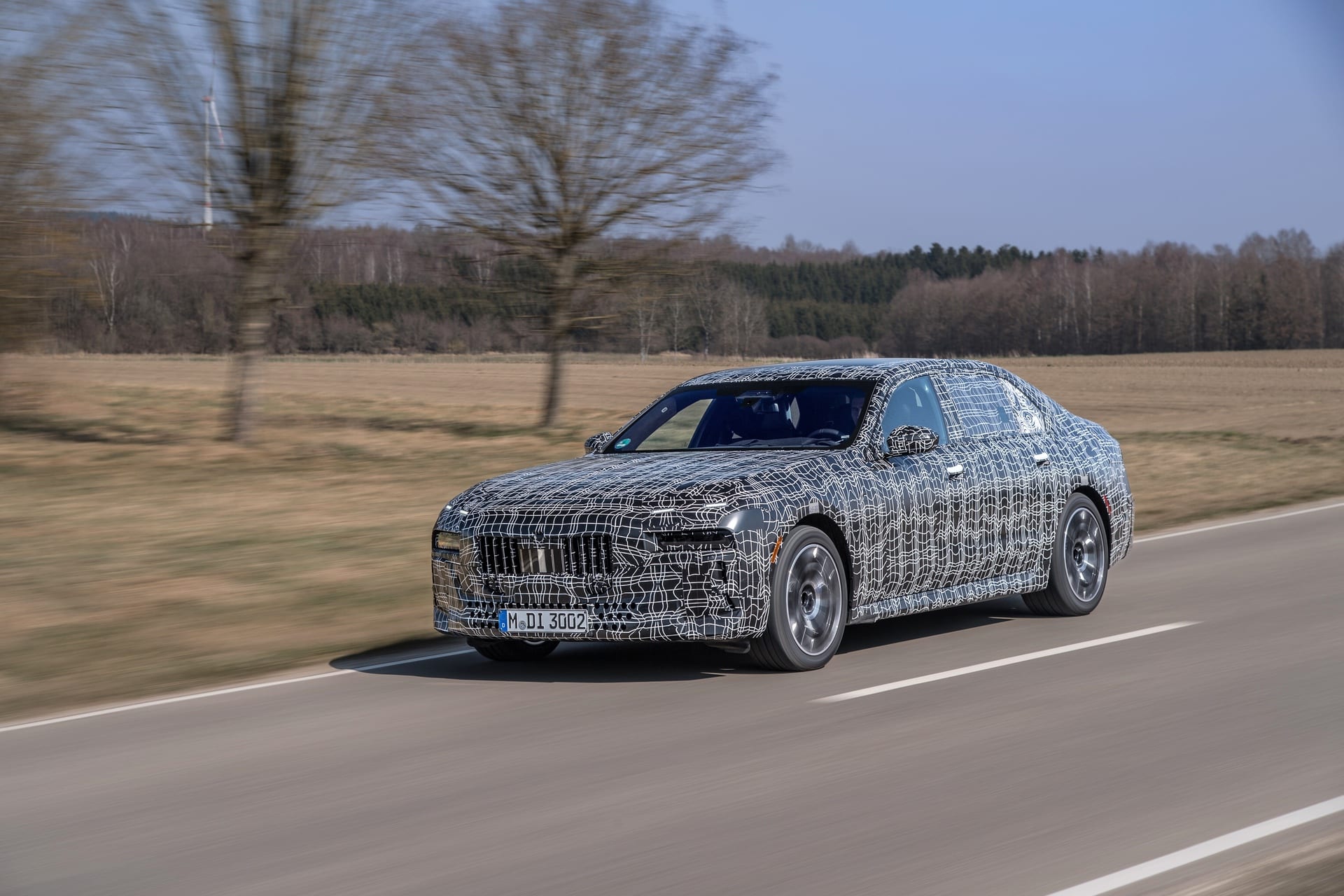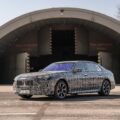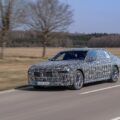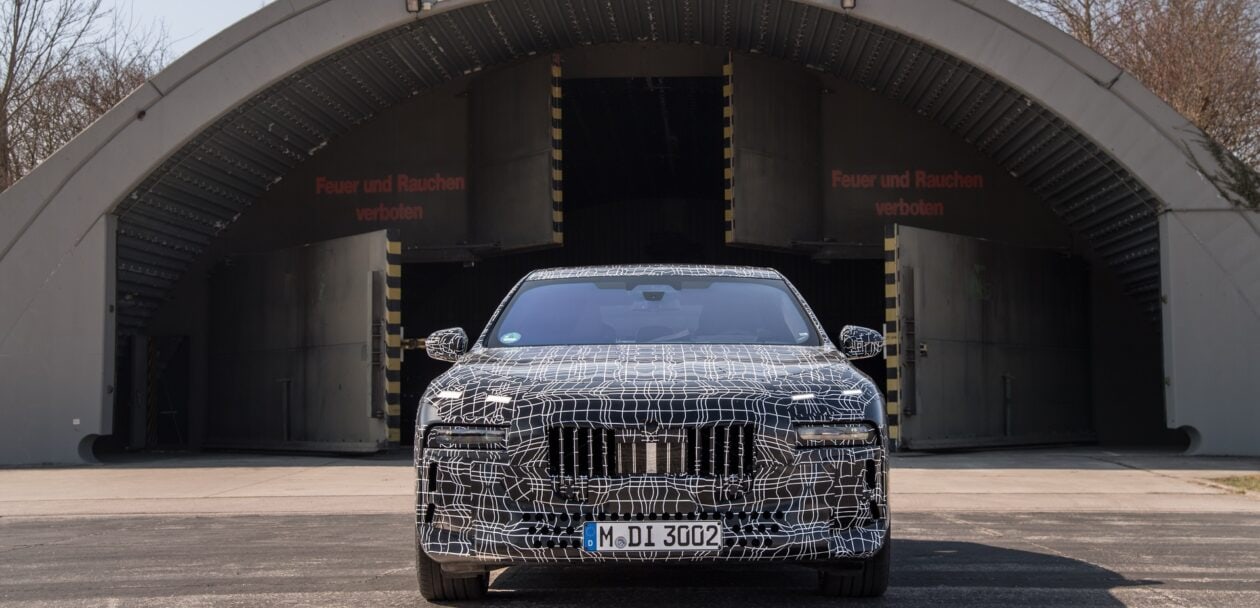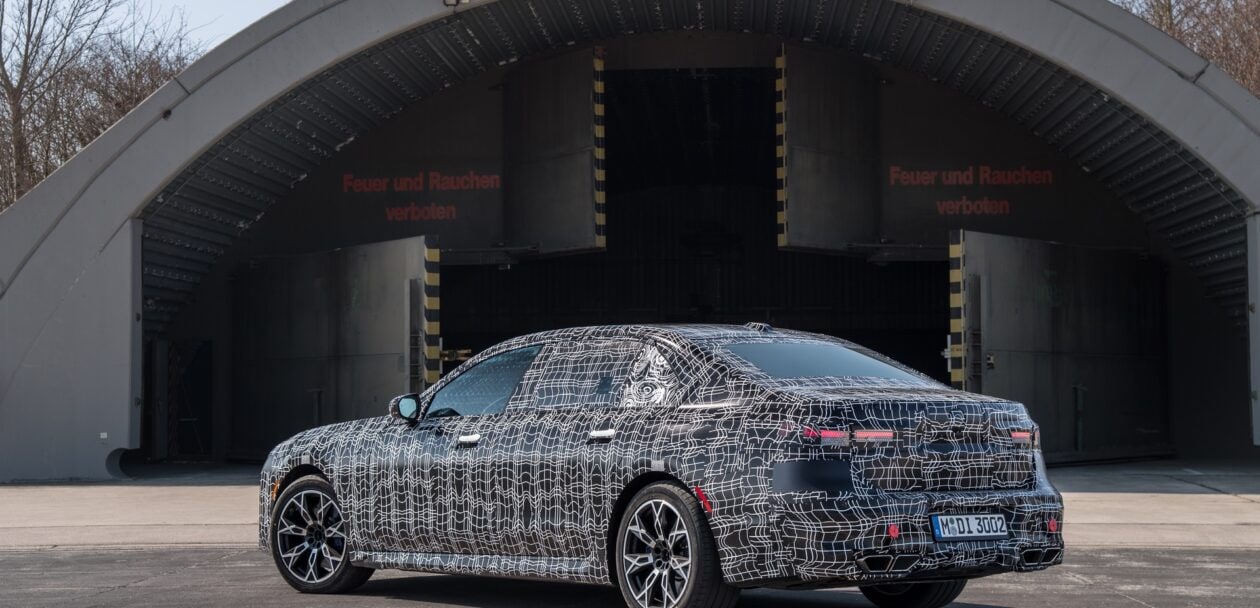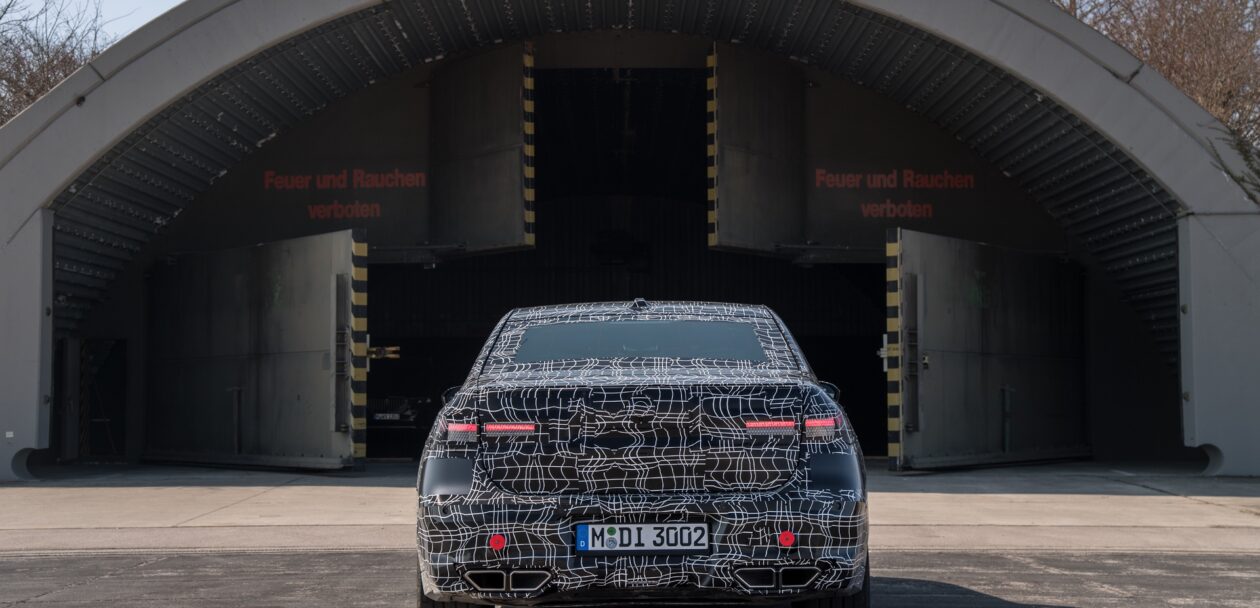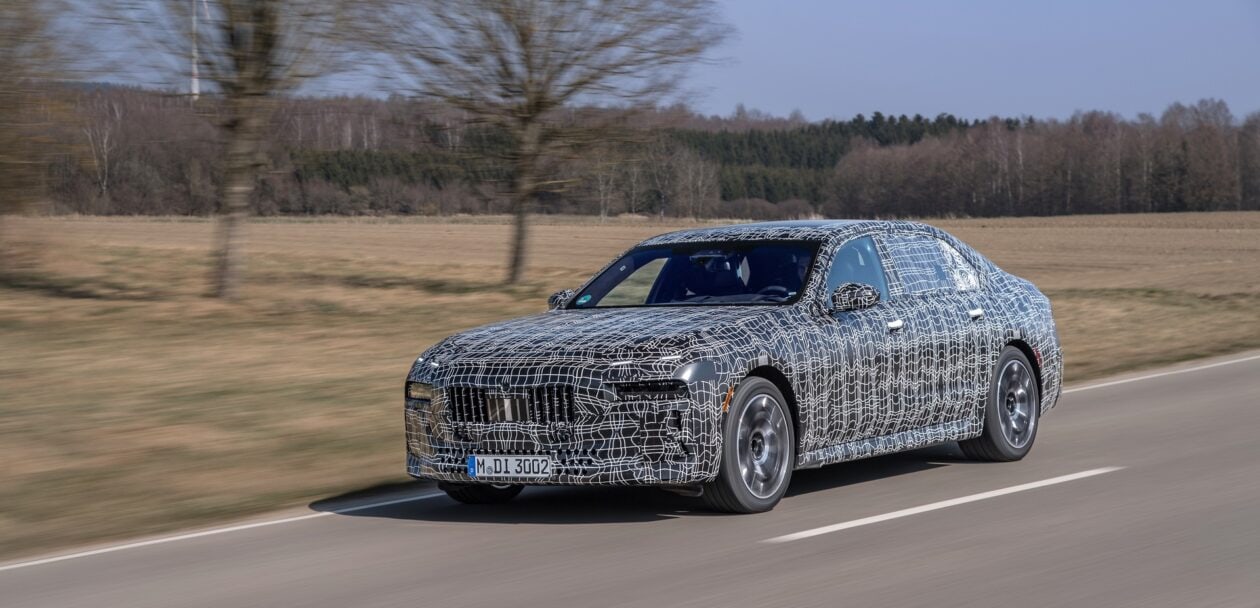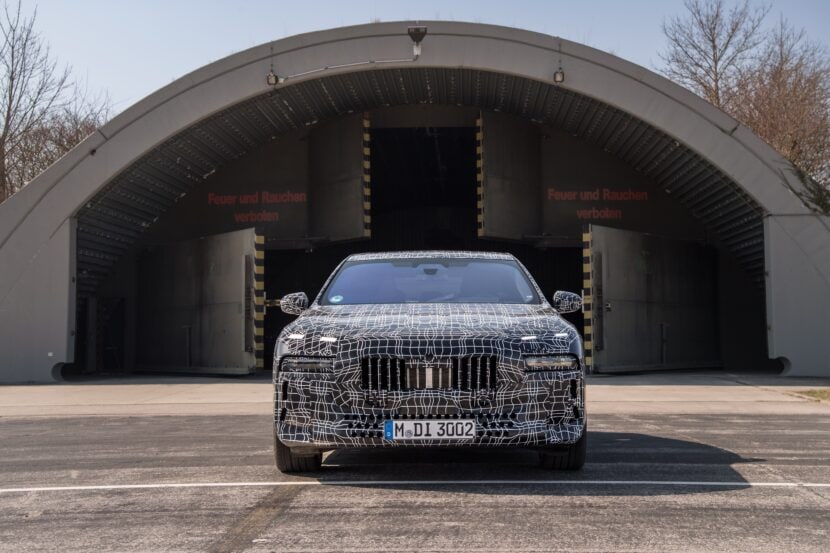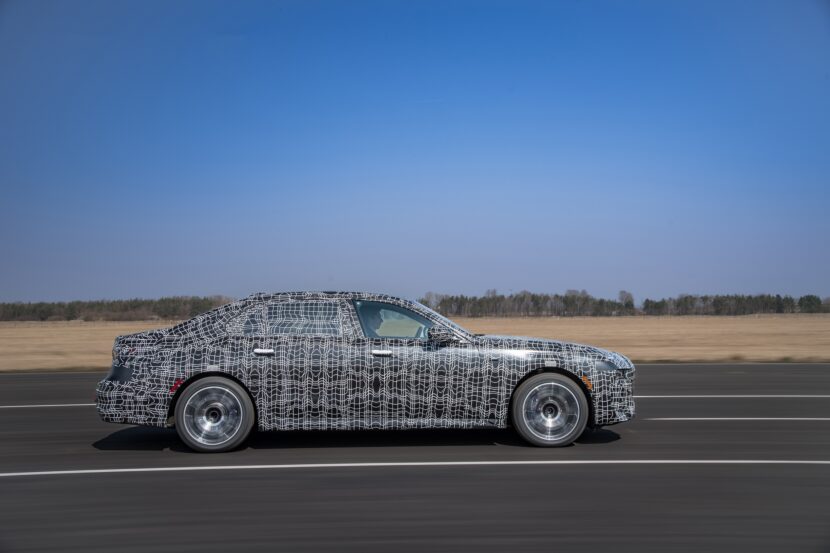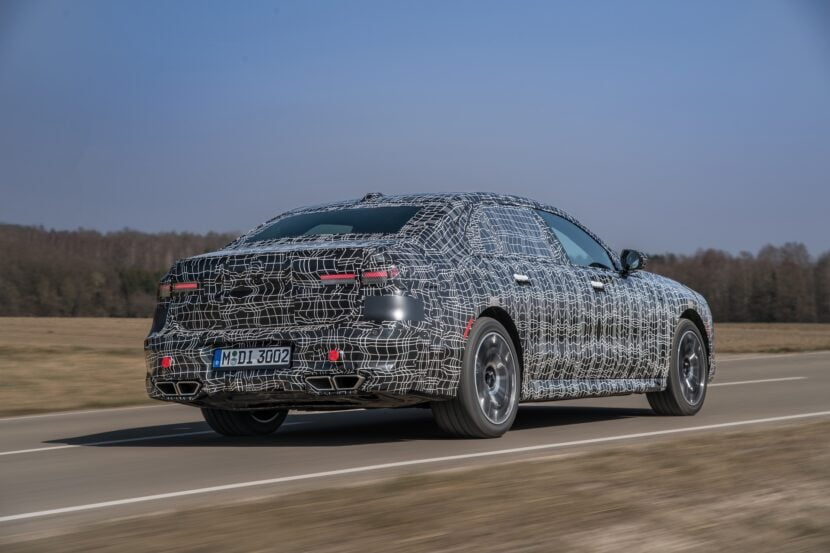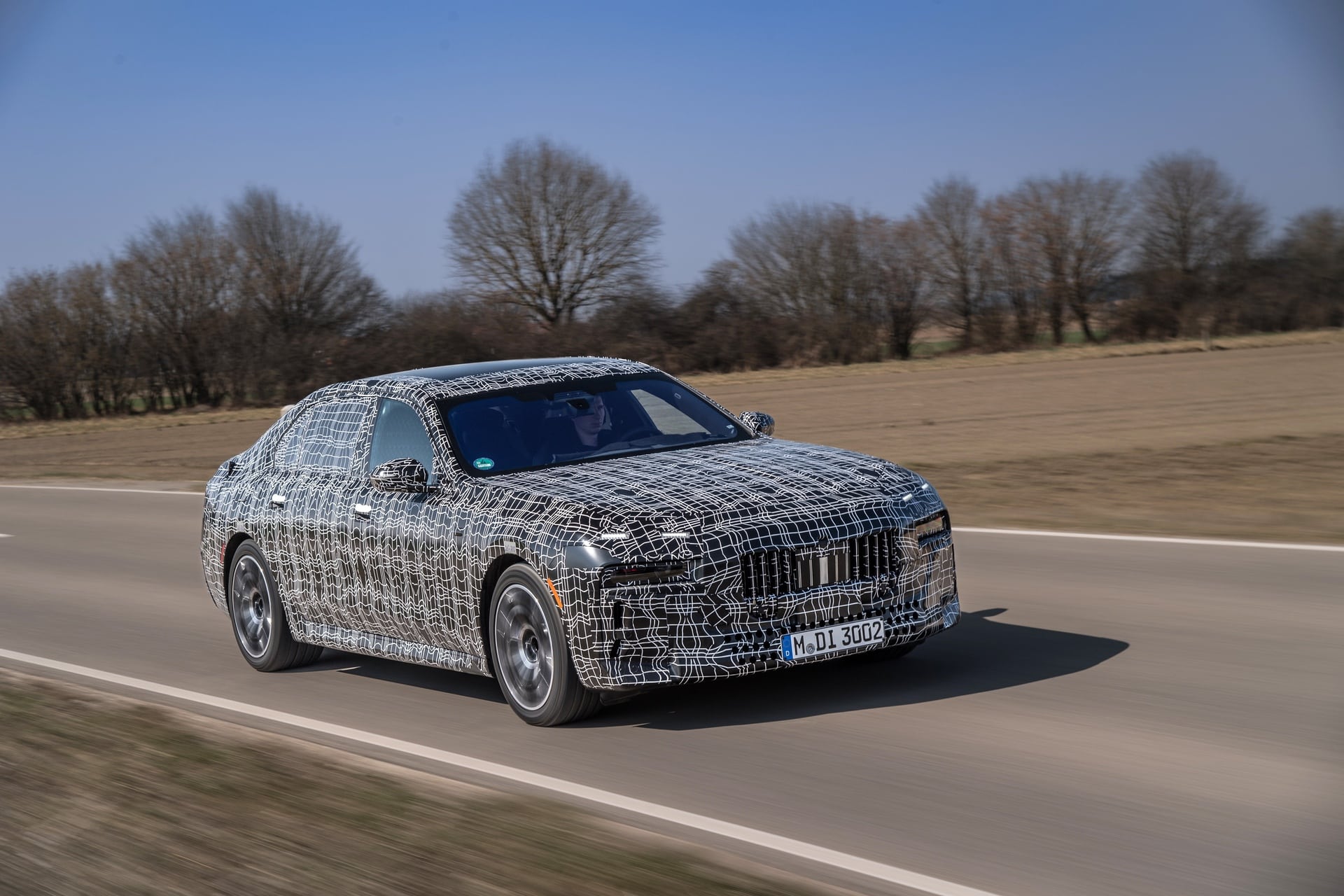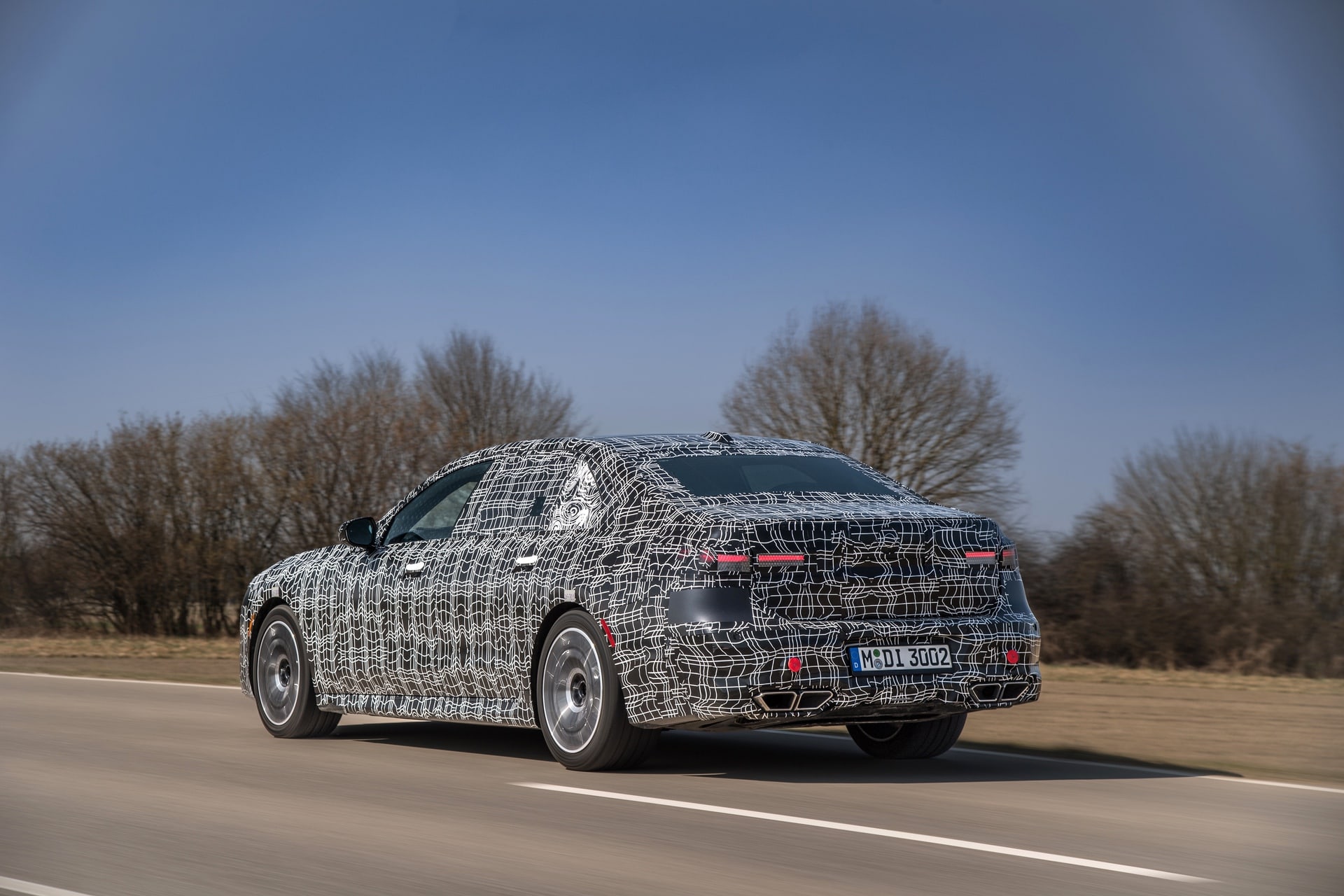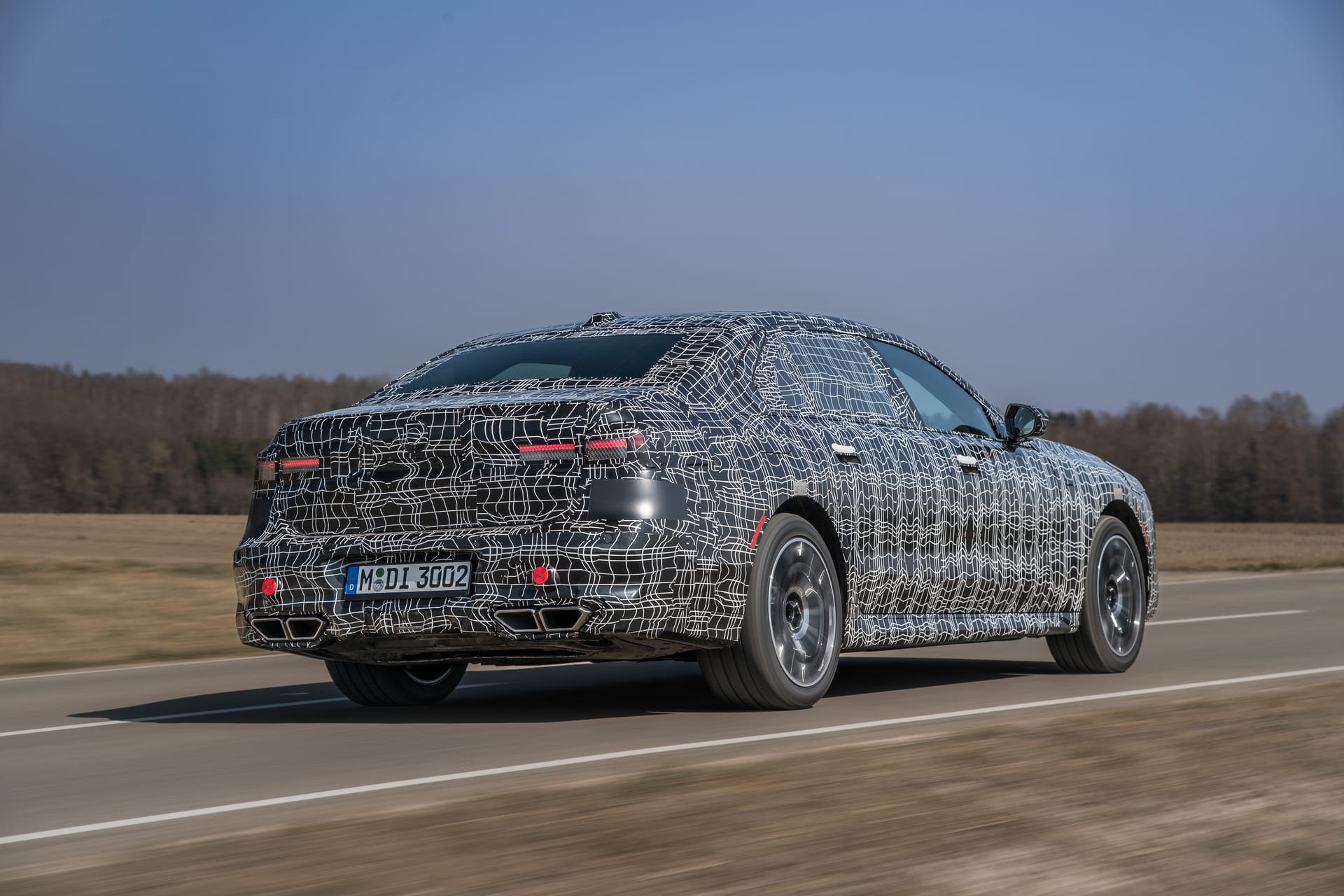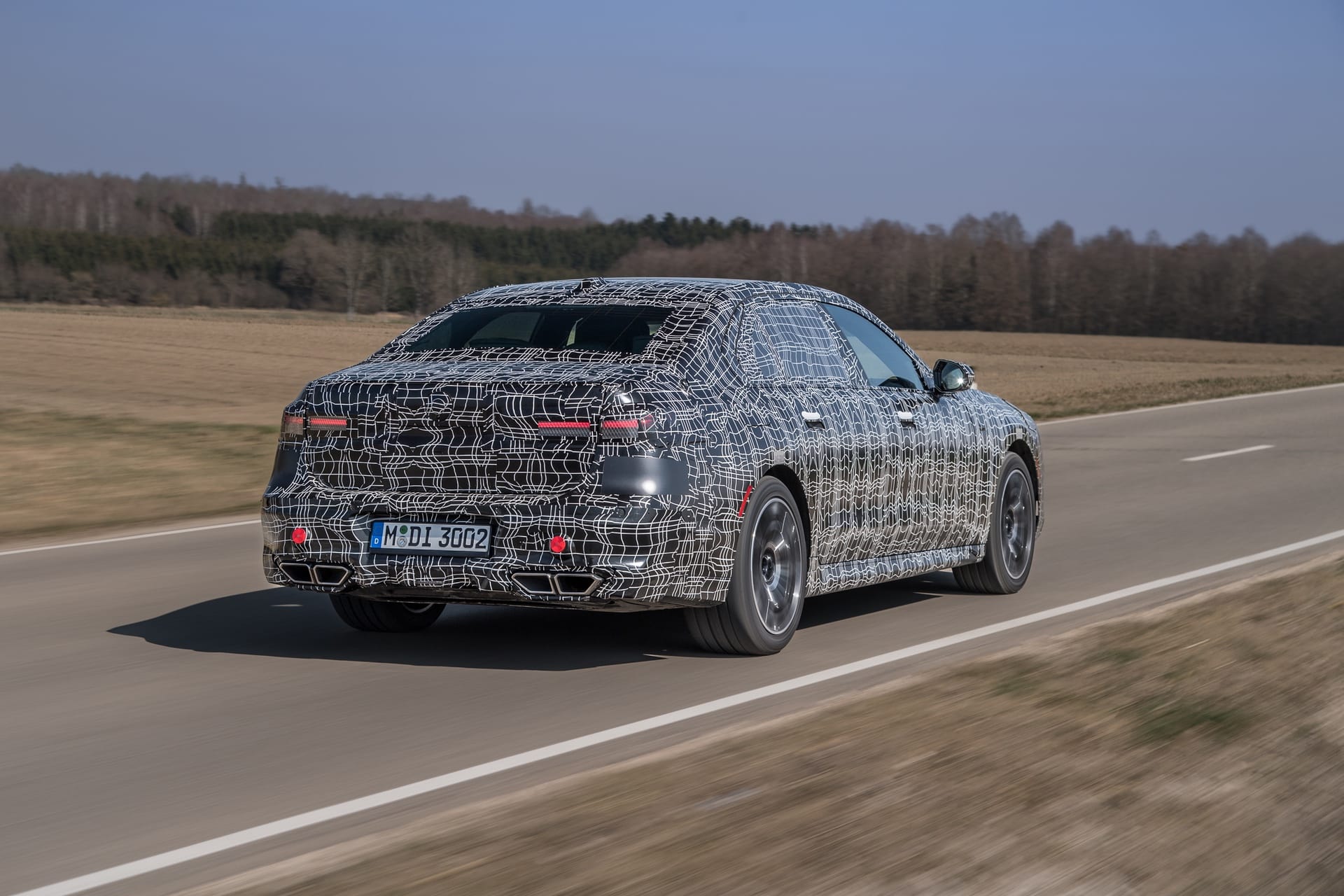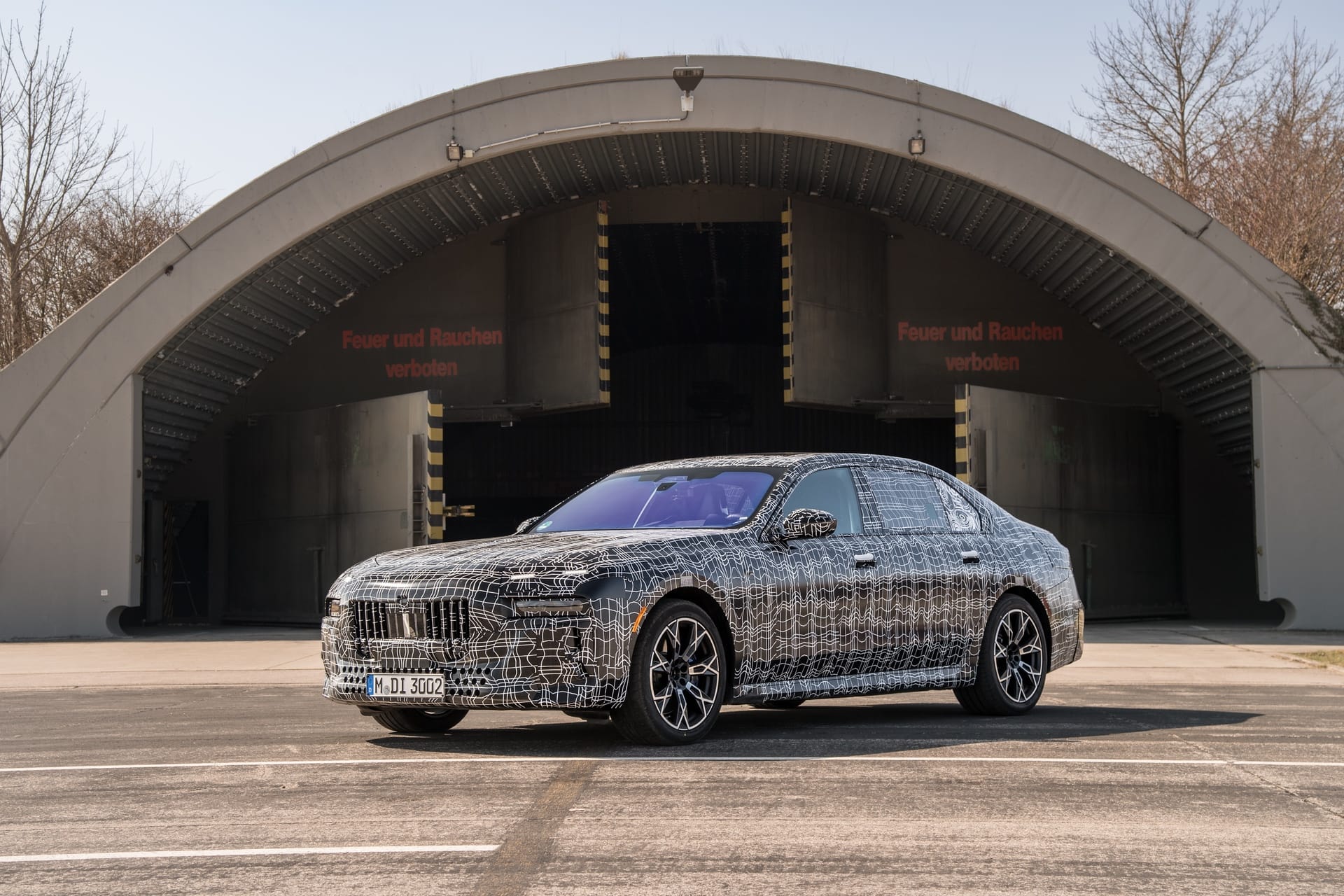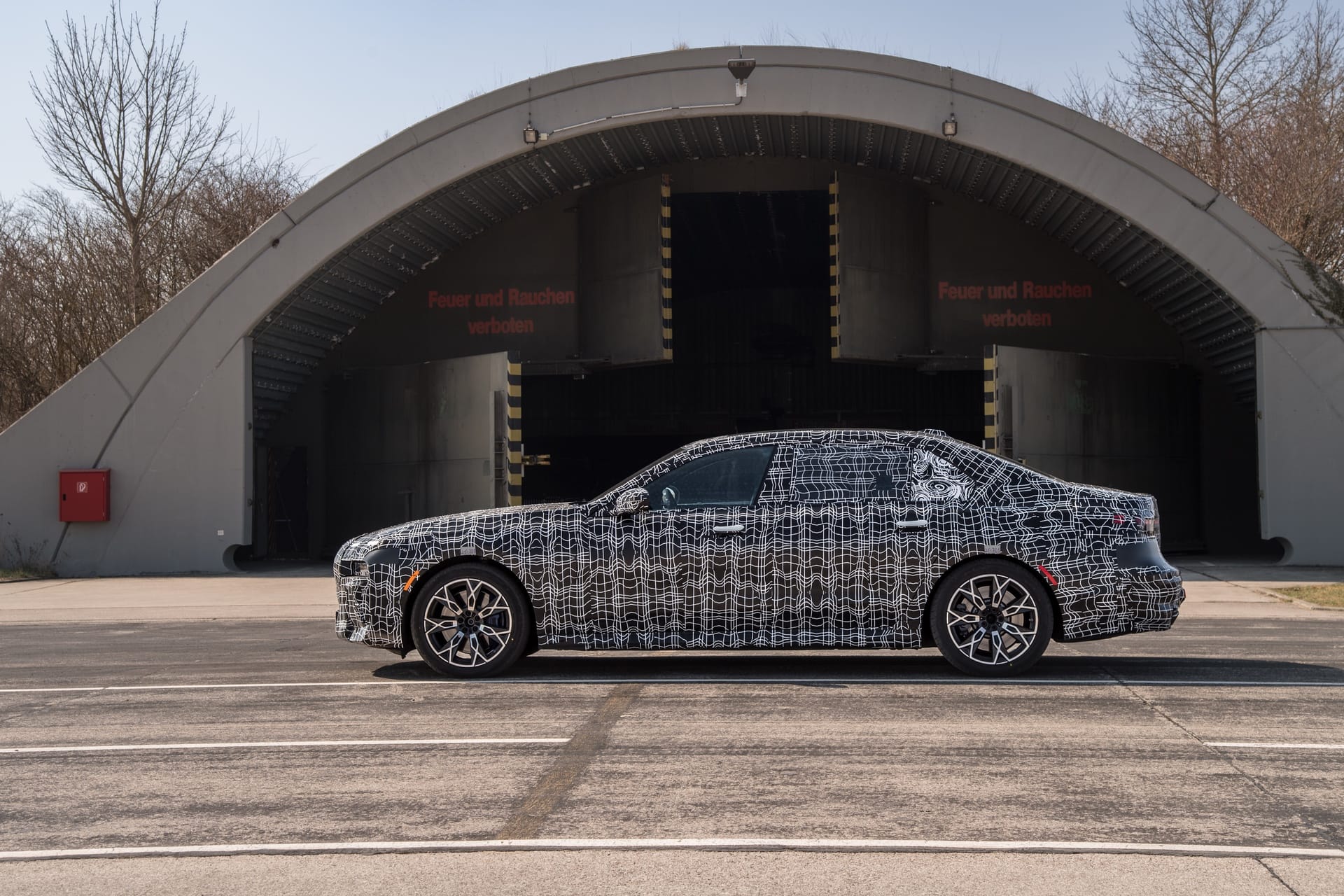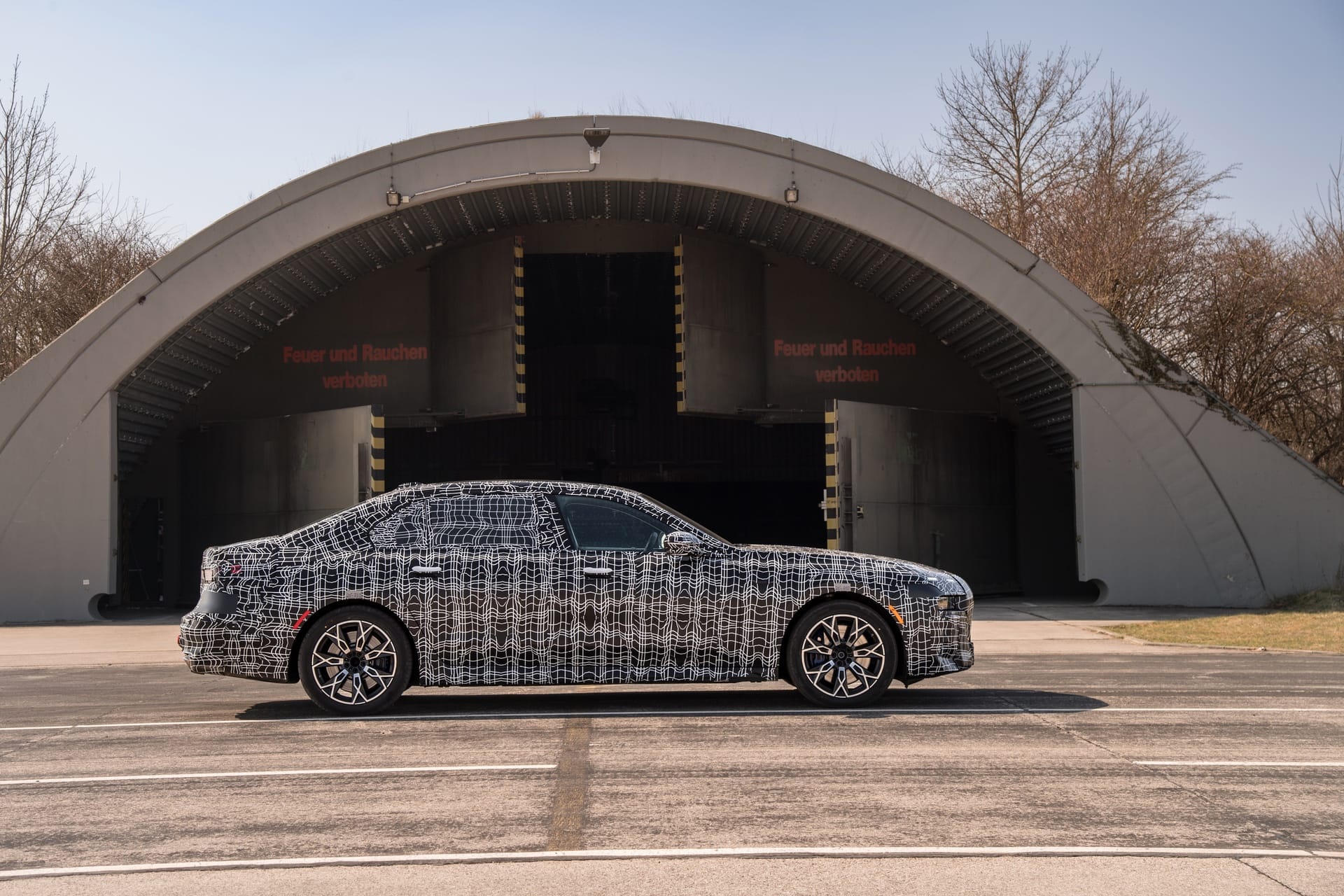Along with the i7 prototype, BMW also handed out the keys to their new gasoline-powered BMW 7 Series. The pre-drive event – held in Munich – previews the official unveil of the new 7 Series G70 which will take place on April 20th. The production series 7 Series cars won’t be available until early fall, so this opportunity allowed me to get an early insight into the engineering of the new limousine.
New V8 TwinTurbo Powerplant
It was also the first time that someone outside of BMW drove the new, yet unconfirmed, S68 4.4 liter V8 engine. The morning briefing skipped all the technical details of the new V8, but there is very little doubt that this is the previously rumored S68 unit which will end up in several new and refreshed BMW models. It’s also part of the BMW XM plug-in hybrid drivetrain. On its own, the 4.4 liter S68 should deliver at least 500 horsepower and it can certainly go above 600 horsepower if needed. And even though BMW was tight lipped about the power output, I believe it was closer to the 550 horsepower than to the lower-end of the spectrum.
In this BMW 7 Series prototype, the new V8 4.4 liter petrol unit was paired with BMW’s 48 volt mild-hybrid technology. Combustion engines are subject to continuous technological developments which optimize their efficiency at all speeds and in all conditions of use. At the same time, there is further reduction in fuel consumption and exhaust emissions. Together with larger batteries for electric and plug-in hybrid models, the mild hybrid improves vehicles efficiency. The introduction of the mild hybrid technology allows the engine to run more smoothly by exploiting the energy recovered during braking, not only to power the electrical devices but also to generate additional power.
Massive and Bold
Just like with the BMW i7 prototype, the exterior and interior were covered in camouflage and black cloth. Peeking from underneath the camo was likely an M Sport Package with the included beefy sport brakes and large wheels (21 inch). No word on the naming of this specific model, but this is likely going to be called the BMW 760i xDrive. And it was certainly an all-wheel drive system based on the driving characteristics.
BMW also fitted the prototype with integral steering, four-wheel steering, electronically-adjustable dampers and air suspension. I covered those in detail in the BMW i7 review, but in a nutshell, they act and behave just like you’ve seen in other BMWs, or in the current generation 7 Series. Of course, there are improvements to the hardware and software stacks, as is the case with any BMW models.
Great Sound, Impressive Power
The morning drive kicks off with the V8 engine which immediately stands out with its deep growls and exhaust burbles. The engine will replace the N63 unit in the current M50i models and it’s likely based on the S63 powerplant found in the BMW M5, M8, X5 M and X6 M. The engine sound is certainly more pleasing than in the previous unit, even though it was already a great-sounding engine. The power delivery is smoother than in the S63-powered M models and that’s likely by design considering that 7 Series customers are not looking for that edgy power delivery.
The torque feels massive, propelling the 7 Series G70 with ease into the tight bends surrounding Munich. I could also feel at times the additional power and torque coming from the 48 volt mild-hybrid tech. Aside from the regenerative braking and boost from the electric motor to reduce engine load, the other added benefit is the reduction of turbo lag. And that’s something I’ve noticed immediately while driving the 7 Series prototype on both the autobahn and backroads.
The new V8 engine is more responsive than before with plenty of power at low RPMs and enough room to accelerate even in the highest gear. Speaking of the gearbox, BMW continues to use the tried and proven ZF eight-speed automatic which delivers the same smooth and precise shifts I’ve become accustomed to.
Compared to the i7 which feels light in the nose, the BMW 7 Series gasoline is more balanced with a heavier steering and increase feedback from the tires. The chassis is also well composed, but of course, despite all the new and old engineering tricks, the body roll can’t be fully eliminated in a car of this size. So it’s there and noticeable at times. Yet, in the Sport Mode, the new 7 Series feels more planted on the road with plenty of grip, thanks to the xDrive setup.
The EDC system does a great job leveling all irregularities in the road surface. The two-axle air suspension automatically adjusts the ride height based on the surface you’re traveling on. It behaves the same as in the i7 by automatically adjusting the body height with a lower ride in the Sport Mode. A new steering gear with standard variable ratio steering rack is also part of the BMW 7 Series package and that works hand-in-hand with the Integral Active Steering.
The latter comes with acoustic decoupling and HSR rear axle slip angle control. Thanks to the four-wheel steering, the rear wheels can turn opposite to the front wheels to increase agility in corners. Of course, it also decreases the turning radius when parking. At high speeds, the rear wheels also turn with the front wheels to increase stability. BMW says that the rear-wheel angle can rise to 3.5 degrees. Rolling stabilization, double-wishbone front axle, five-like rear axle and Z-hydraulic rear axle bearings are now part of the core engineering of any luxury BMW model.
Cornering performance is impressive for a car of this size and weight, and despite the typical body-roll of a 7 Series, the new G70 chassis is more dialed in and stiffer than before. It’s likely that BMW stayed true to its carbon fiber-enforced chassis which is available in the current 7 Series as well. The steering is weighty but numb. Again, that’s by design since BMW has pursuing less feeling and more comfort in their cars. Of course, the thick M Sport steering disguise the lack of feel and I’m okay with that in a luxury limousine.
But I’m happy to report that steering precision is still great in this new 7 Series. During cornering, the effort builds nicely, and no steering-wheel adjustment or correction is necessary to hold the driving path. In the end, most of the 7 Series customers are not treating their limousines as their track cars. Naturally, BMW still wants to differentiate themselves from Mercedes when it comes to driving dynamics.
Level 2 Plus Features
All this new tech works together in delivering the most advanced driver assistance system in any BMW. The new 7 Series and i7 comes with an Assisted View feature which provides augmented reality extension in the instrument cluster. There is also a new Highway Assistant (available only in the U.S. and Canada), along with a Highway Exit Assistant. The latter allows the car to change up to six lanes by itself before existing a highway. The feature will let you know as you approach your exit and by tapping the turn signal, you can confirm the exit.
The former is quite interesting too. By simply taping the turn signal in the desired direction, the new 7 Series will change the lanes. If the car detects is safe to do so. The car will also adjust its speed to safely perform the procedure. Of course, a throttle push will temporarily disable it. The Highway Assistant works at speeds up to 85 mph (137 km/h). Also, for the first time, the driver can enjoy the hands-free driving experience for prolonged times since a push on the drive or brake pedal won’t immediately disable the Level 2 Plus features. But it rather revers to Level 2 functions.
German customers also get the Urban Cruise Control with traffic light recognition. The usual Active Lane Guiding, Emergency Assistant, Collision Warning and Intelligent Speed Assistant are also included. BMW labels these new driver assistance systems as Level 2+, but the new 7 Series and i7 feature the sensor setup for a Level 3 implementation.
Ultimate Driving Machine Or Ultimate Comfort Limousine?
With more and more comfort features, along with a theater on four wheels, the high-end luxury limousines aim to shift the customer experience from outside to inside the car. But it’s commendable that BMW still aims to deliver a good driving machine. And it’s even more impressive that the recipe is improved with every new generation. The new V8 engine is also a statement to the engineering DNA instilled in Munich and could go down as one of the best engines every made by them.
I look forward to spending more time with the 7 Series production model and riding in the back seat to explore the limousine at its best. But more on that in early Fall 2022.


